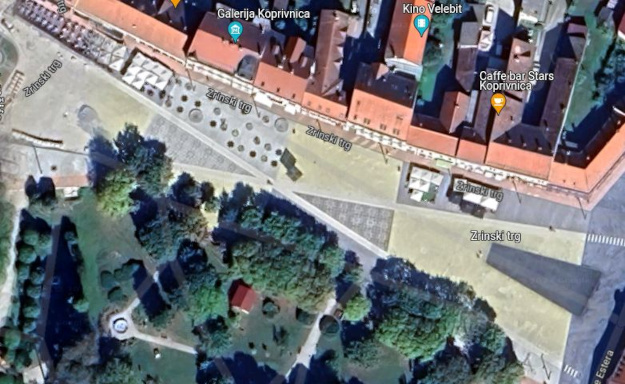Why do almost all the successful main characters on the scream drive cars or motorbikes instead of bicycles? Think on James Bond or Batman, they move on cars rather than bikes. Cinema is only one example of the overwhelming influence of cars manufacturers on potential buyers. When we see a character riding a bike, he or she usually is on holiday or practicing sport instead of using it to go to work, shopping or study (or is delivering something). This intentional detail was successfully implemented more than half century ago and we have grown up with it in our brains with hesitating. However, the tendency could change in the coming years as less and less teenagers want to drive cars at least in developed countries, cartoons show characters on alternative, non-pollutant vehicles and adults fight against climate change by using alternative ways of transport while some people add the economic concept to the “fight” of bicycles vs cars.
Why Shopping Malls Refuse to Die
How Much Should a Parking Space Cost?
Urban Mobility Courses
Have you imagined a platform full of free courses on mobility to have the opportunity to become an expert? It exists on Urban Mobility Courses (UMC) by EIT Urban Mobility and the European Union.
At the time of writing this post, it contained 36 online courses, from basic to intermediate level and two or more hours of duration. The access to the courses and materials is free. They use videos and articles in refeence media and if you want to obtain the certificate there is the need of paying less than 10 euros. This way you can show them off and use in your resumé.
Regarding urban cycling, there are six courses made by experts such as Georg Liu and Lior Steinberg.
The eight fields in which to specialize are:
-
A stronger, accessible, high-quality public transport system
-
Enhanced options for active mobility like walking and cycling
-
Better management of mobility flows through digital solutions
-
Multimodal stations and hubs that connect all modes of transport
-
Streamlined urban logistics, last-mile delivery, and consolidation centers
-
Zero-emission vehicles and high availability of recharging points
-
Efficient on-demand and shared mobility services
-
Effective local policies and measures discouraging individual car use
Can Trains Save Seattle?
Why Traffic Is Worse Than Ever
Bicycle song by Red Hot Chili Peppers
Red Hot Chili Peppers is one of the most important, international rock band in Los Angeles. I am sure you have listen to many songs from it, but perhaps Bicycle song is new to you. It was included as a bonus track in the By the Way disc re-edition in 2006. It talks about pedaling is similar to fly, to transcend, to mutate, when Anthony Kledis sings How could I forget to mention the bicycle is a good invention?. The song deals with love and the idea of referring to the bicycle spirit is something that fits like a glove.
Bicycle Song lyrics:
Here she comes in a suit and tie
Shepard’s bush and a leopard’s pie
She marching to the funky beat of
James Brown and his dancing feet
Going to set your fish on fire
Pistol whipping of desire
So please do not resist your fate
I’ll pick you up, yes it’s a date
How could I forget to mention the bicycle is a good invention?
Sitting there in a silent movie
Beside the only girl who really ever knew me
Happy days, but sad I’m facing
Heaven knows that I’m on the case
How could I forget to mention the bicycle?
Somebody told the world
The beauty of your verse
My girl, I heard it first
The beauty of your verse
A sticky finger and a wicked taste
Got a lot of love and a lyrical case
Be sure to write it in your book
I promise not to look
Want to smell your sunny face
Funny place but it’s never a waste
I’d hop this fence to make amends
I hope this movie never ends
How could I forget to mention the bicycle is a good invention?
Make it up, making you my business
A funny buttercup but I lend her forgiveness
Happy days, but sad I’m facing
Heaven knows that I’m on the case
How could I forget to mention the bicycle?
Somebody told the world
The beauty of your verse
My girl, I heard it first
The beauty of your verse
Somebody told the world
The beauty of your verse
My girl, I heard it first
The beauty of your verse
Do Cities Subsidize Rural Lifestyles?
Why Living Next to a Freeway Is Highly Questionable
Zrinski square
About 30,000 people live in Koprivnica, Croatia. Its public institutions define it as “a space of tradition, environmental, cultural and economic values”, close to the Drava river and the Kalnik mountain.
The Zrinski square is surrounded by coffee shops and stores. “A place defined by people fluxes and movement”, according to the architecture study which created it as is nowadays. So, it was the challenge: To reinvent this privileged space in order to promote interaction, humanity and life.€2 million euros made it possible. They took advantage of the square perimeter and created a collage of micro-localizations on which develop several, concrete activities. Two bike lines in X cross the square on the north. Based on them, the square is divided in twelve areas related to the closest building. The 15,000 squared meters square is colored by area and completed with urban furniture, including bike parking, and different surfaces. The objective of this project was to ban cars from it and time has demonstrated that it is possible and necessary. Today, there are not any cars there, but people and bikes.
Not surprisingly, Koprivnica is considered as the Croatian biking capital and cyclist are welcomed here. Indeed, there are metallic sculptures in the Zrinski square with bicycle shapes as homage to this essential way of transport.
